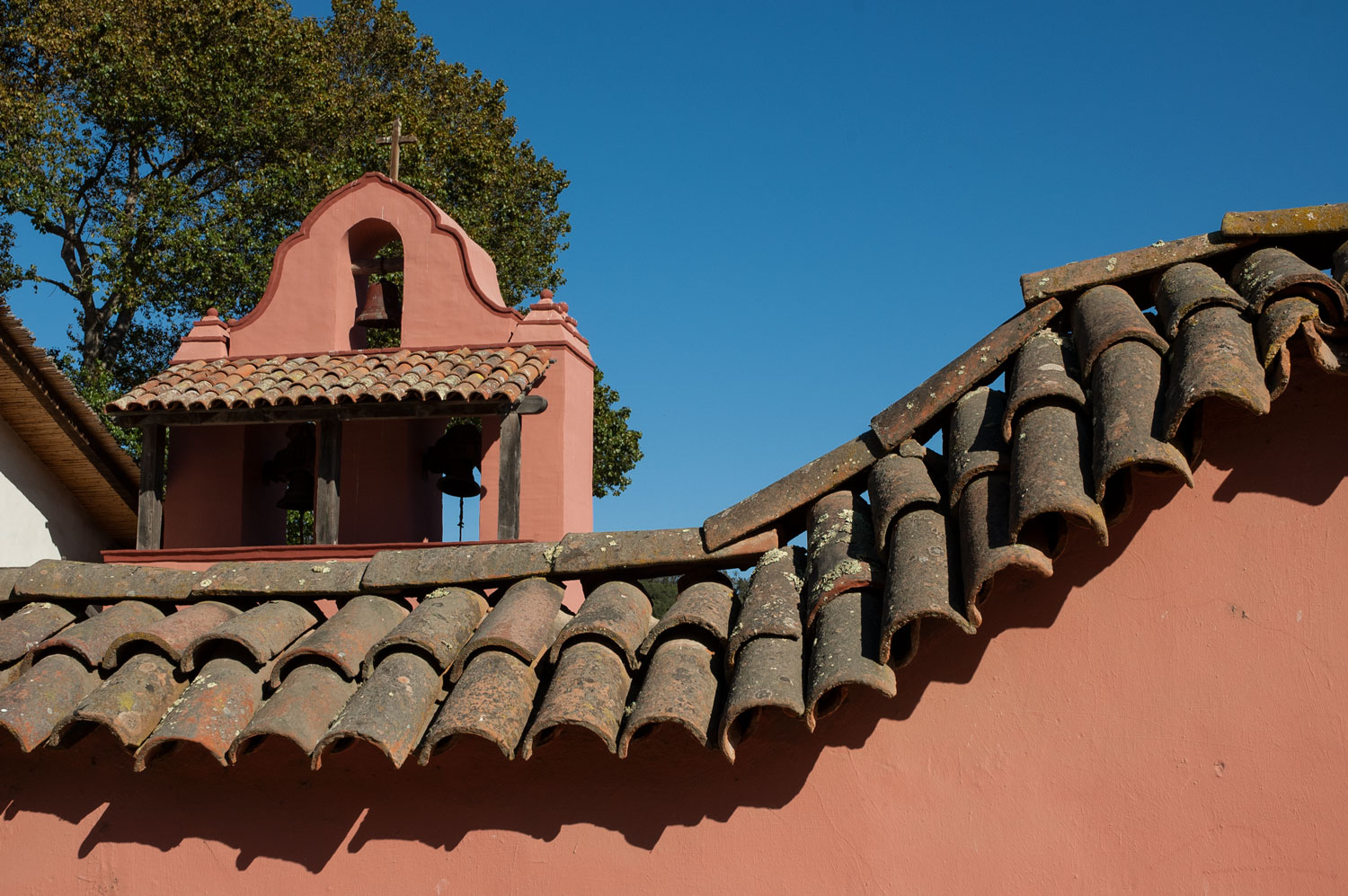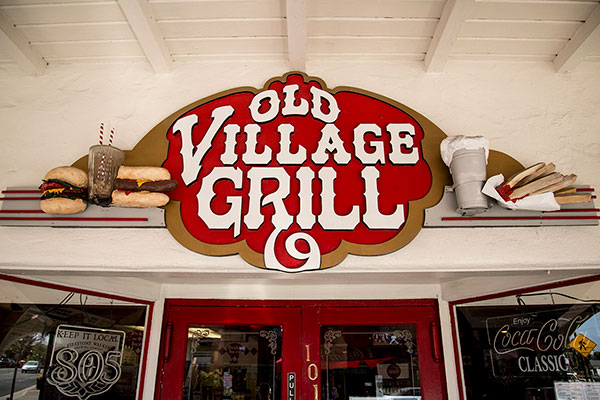La Purisima Mission
Photos by Forrest Anderson
The story of the Chumash Native Americans of California’s Central Coast is a tragic cautionary tale that is disturbingly modern in its themes of environmental damage, epidemic and racial exploitation.
The Chumash are among the Americas’ most ancient people. The oldest known human remains in America – a man who lived 13,000 years ago – have been found on Santa Rosa Island about 26 miles off the coast of Santa Barbara where the Chumash and their descendants lived for millennia. The ancestors of the Chumash lived in small villages on Santa Rosa and other islands for thousands of years, fishing and trading using canoes of driftwood that washed up on the beaches.
Protected by mountains, the Chumash are believed to have had a relatively peaceful life. The staple of their diet was wild acorns, especially those of the coastal live oak which they leeched of toxic acids and ground into meal. Grinding holes that they wore in large rocks can be seen today. They supplemented acorn flour with berries and roots, fishing and hunting game. The mild climate, ample food and relative lack of warfare meant that the population was large and healthy. About a third of all Native Americans in what is now the United States are believed to have been living in the California area before Europeans landed in North America. An estimated 300,000 Native Americans in 30 tribes of which the Chumash were one lived in California when the first Europeans entered the area.
The various tribes spoke 80-90 different languages and dialects, but traded with each other for salt, food, flint or obsidian for making spear and arrow points. The Chumash made shell beads that they traded as a form of currency and that have been found in other parts of the West. They made tools from wood, leather, netting, stone and antlers, and wove beautiful baskets, some of which now are in international museums. Fine collections of Chumash baskets are at the Smithsonian Institution in Washington, DC, and the Musée de l'Homme in Paris, France. The Santa Barbara Museum of Natural History has probably the largest collection of Chumash baskets.
They made dwellings by digging down two-three feet, creating a roof frame of brush and covering it with animal skins. In coastal areas, they built semisubterranean houses with redwood or cedar planks. They wore scanty clothing in the summer, but in the winter wore tanned deer hides and other animal leather and furs along with coarsely woven grass clothing.
The first Spaniards who saw them dismissed their lifestyle as subsistent, but their basket weaving and canoe building were masterpieces as was their management of the environment. They were skilled forest farmers, tending productive oak and tanoak groves from which they gathered acorns in large quantities for winter food storage.
They conducted controlled burns of underbrush and grass in the forests and meadows on a cyclical basis to prevent large catastrophic fires and encourage the growing of sprouts that attracted animals that they hunted. As wildfires have devastated thousands of acres in the West, such Native American forest management is being reconsidered now.
Chumash hunters dressed as deer and grazed alongside the animals until they were close enough to kill with arrows.
Chumash food cultivation was a form of low maintenance food production that incorporated fruit and nut trees, shrubs, herbs, vines and perennial vegetables in woodland or wetland settings. The result was sustainable agriculture that fed generations over thousands of years.
The Chumash lived in more than 150 villages on the coast, islands and in the interior, speaking variations of the same language. They were skilled in herbalism for teas and medical remedies, using yerba santa to keep airways open, laurel sumac root bark to treat dysentery, and black sage to treat sunburn or other pain. The Chumash produced rock art which can be seen at Chumash Painted Cave State Historic Park, and had a calendar system. They used red abalone shells to make fishhooks, beads, ornaments, and other artifacts.
The Chumash had games designed to teach children needed life skills. Their worldview involved a multi-layered universe that had always existed, with the sun, moon and other celestial bodies at the top, humans in the middle and snakes at the bottom. The Chumash had a legend of a universal flood after which human beings had been created.
The Chumash inhabited part of San Luis Obispo, Santa Barbara, Ventura and Los Angeles counties and the three Channel Islands of Santa Cruz, Santa Rosa and San Miguel. The area still has many Chumash place names – Malibu, Mipomo, Ojai, Pismo Beach, Point Mugu, the Simi Valley and Lompoc.
It is at the La Purisima Spanish mission in Lompoc that a snapshot of the tragic decline of the Chumash can still be seen.
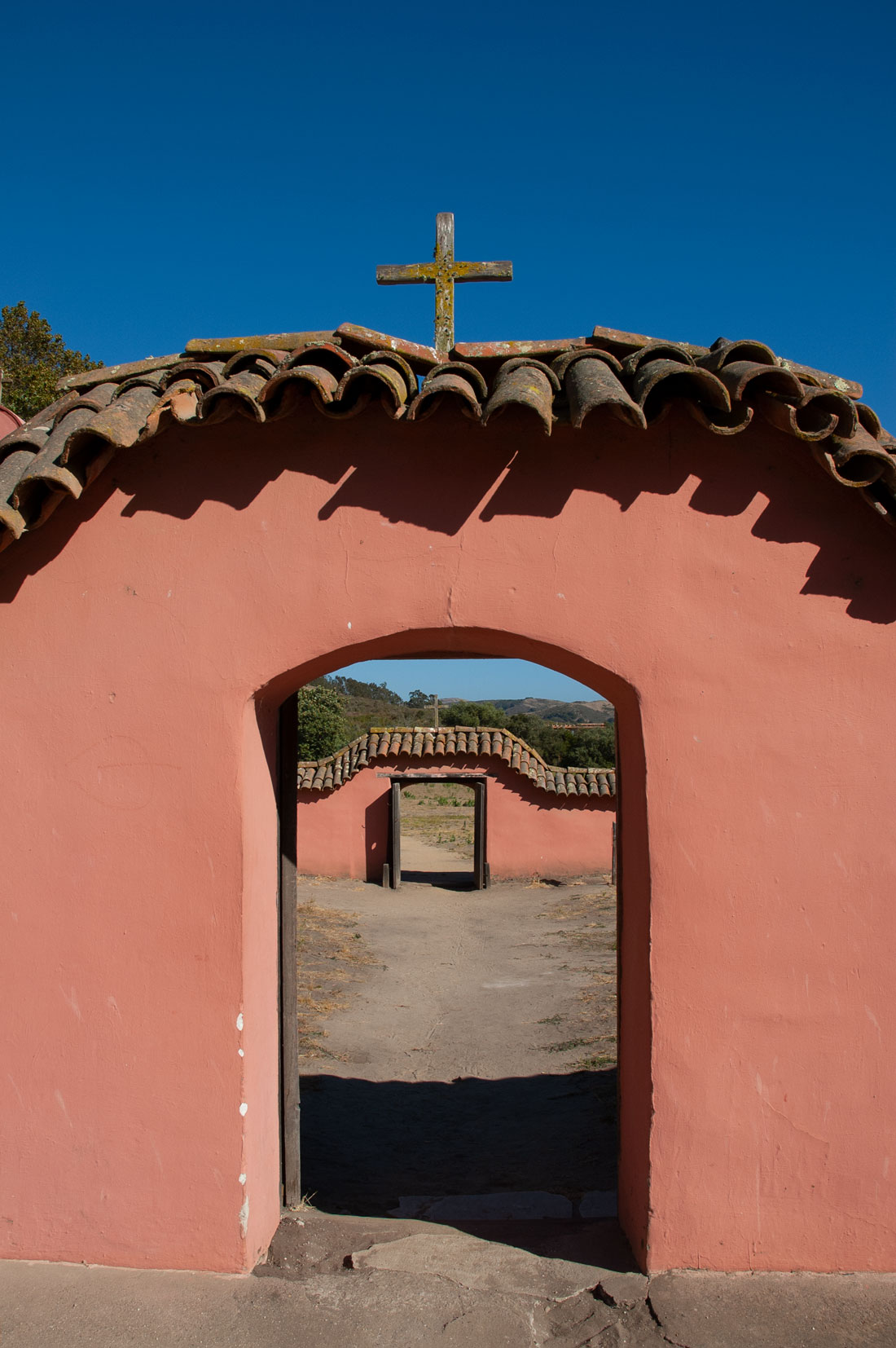
The Spanish imported their architecture and religious practices through the series of missions they built in California.
The Sierra Nevada mountains and Great Basin Desert isolated California’s Native Americans from the tragedies and damage of European colonialism until much later than many other areas of the Americas.
The Spanish arrived in North America in the early 16th century, conquering the Aztec Empire of Mexico in 1519. In about 1530, Hernan Cortez heard stories of a land of gold, pearls and gems to the northwest and began exploring to the north. He discovered the Baja California Peninsula, which he thought was an island.
Later expeditions pushed further north into the area now known as California, named after the fictional island of California mentioned in a romance published in about 1510.
Other expeditions followed, with Juan Rodriguez Cabrillo believed to be the first European to explore the California coast. He and his crew landed at Los Angeles, naming it the Bay of Smoke after the Chumash cooking fires along the shore, and then headed north up the coast. The expedition’s assessment was that there was nothing for the Spanish to exploit in California.
However, the Spanish in 1565 developed a trading route taking gold and silver from the Americas to Manila in the Philippines to trade for goods and spices from China and other areas of Asia. Eastbound galleons from Mexico sailed north to about 40 degrees latitude and then turned east to use the westerly trade winds and currents to cross the Pacific. On their return trip, these galleons arrived off the Pacific coast about 300 miles north of San Francisco and then sailed south down the coast on the south-flowing California Current to their home port in Mexico.
In 1697, Jesuit missionaries established the first permanent mission in Baja California, and 30 Spanish missions were eventually established on the peninsula.
However, the Spanish had no interest in colonizing California until the 18th century, when they became worried about British, French and Russian activities there.
Spain launched a three-pronged approach of building presidios (forts) with soldiers, extending Catholic missions along the California coast and encouraging Mexican settlers to migrate to California and establish towns or pueblos and ranches.
The first presidio was established at San Diego in 1769, and Franciscan priest Junipero Serra founded the first California mission there the same year. Four presidios eventually were established to keep the great ports of San Diego, Monterey and San Francisco as well as Santa Barbara under Spanish control. Twenty-one missions were established along the California coast to spread Christianity among the native people.
The missions introduced European livestock, fruits, vegetables, agricultural industry, and invasive plant species into California. The history of the missions is controversial because it is widely believed that Native Americans were forced to supply labor for the missions.
The Chumash people outnumbered the soldiers by 140 to 1, and relations between them and the Spanish were mostly peaceful, but conversion to Catholicism was seldom entirely voluntary. There was both a degree of free will on the part of the Chumash and a degree of indentured servitude. Converts had many privileges over other Chumash, but were forbidden from engaging in traditional practices. Few died violently at the hands of the Spanish, but hundreds of Chumash people died as a result of European diseases that they had no immunity to. More than 120 died from measles in one month. Hundreds more died of chicken pox.
Mission life included a comprehensive program to retrain native people to live in a Spanish colony. Converts were required to live in mission compounds or on rancheria sponsored by missions. They were taught Spanish, Catholicism and trained in European skills – brickmaking, construction, raising cattle and horses, weaving, tanning hides, candle making, bread baking. In the process, many of the skills that had sustained the Chumash for thousands of years were lost. The Spanish assumption was that the Chumash way of life was inferior.

The oven and kitchen at La Purisima.
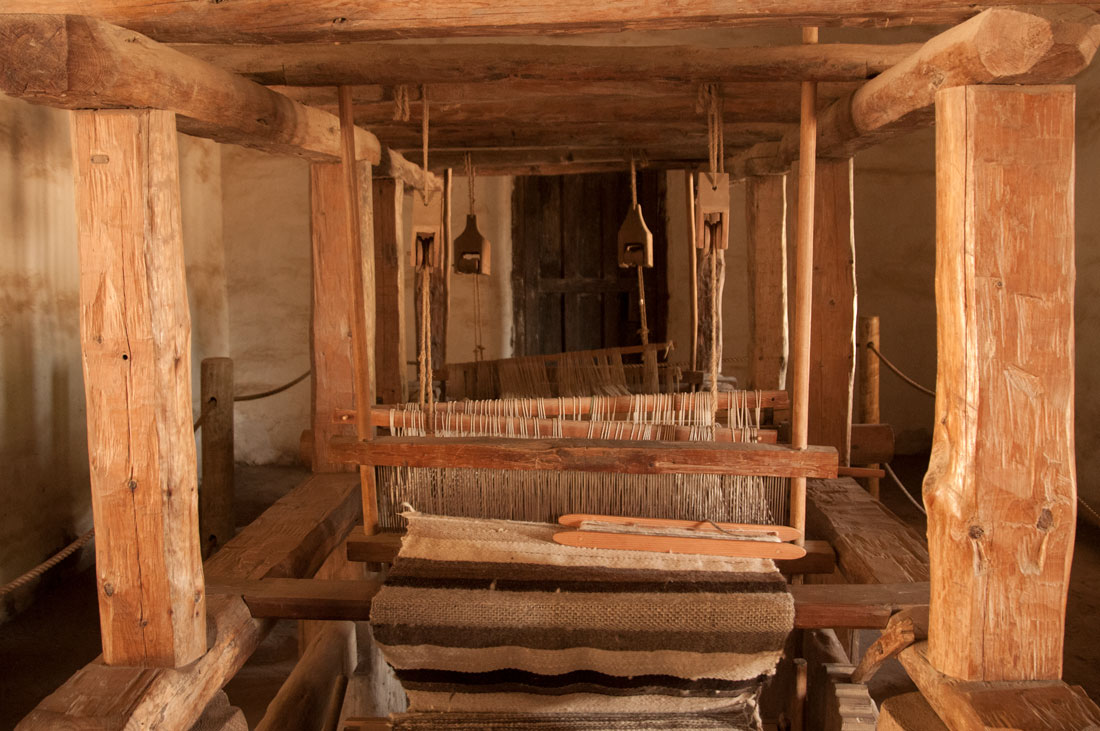
The Chumash were taught weaving and many other skills at the missions, but they lost other traditional skills in the process.
In theory, converts were to live at the missions only until their education was complete, and then establish homes in nearby pueblos. The missionaries were to move on, leaving the missions to become parish churches as they built new missions elsewhere. However, the Spanish never came to consider the converts ready for life outside the mission system. By the time the mission system ended, the number of California’s native peoples had been reduced by half to about 150,000. In the missions, disease, crowded, harsh living conditions and high infant and young children mortality contributed to the decline.
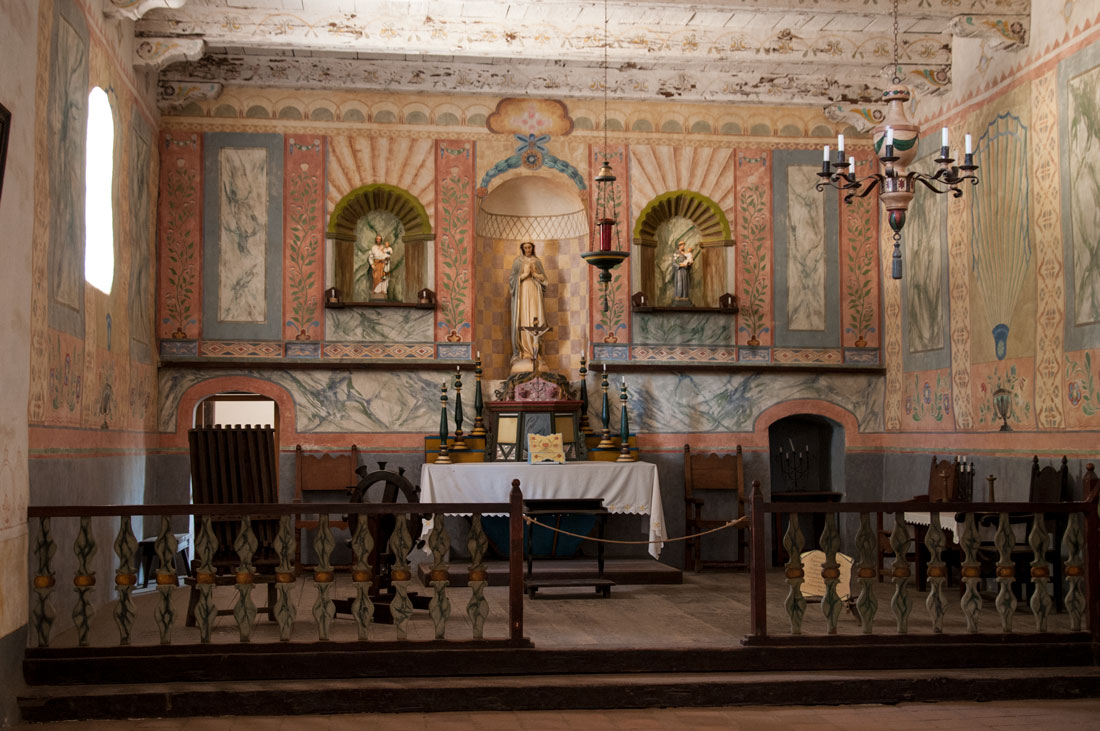
The Catholic religion permeated life at the missions. The native peoples were expected to convert not only in their religious beliefs, but in their entire lifestyle.
The missions were about 30 miles or a day’s horseback ride apart along the 600-mile-long Camino Real or “Royal Road” up the coast. Soldiers, settlers and other travelers and merchandise on horses, mules or ox carts and animal herds used the route.
The missions were about the size of modern California counties, but were governed typically by two Franciscan missionaries and six to eight soldiers. The size of the native populations at the missions was small at first but grew to thousands by the end of the Spanish period in California.
La Purisima’s formal name was La Misión de La Purisima Concepción de la Santisima Virgen Maria, or The Mission of the Immaculate Conception of the Most Blessed Virgin Mary. The name stemmed from the date that it was dedicated – Dec. 8, 1787, the day of the Feast of the Immaculate Conception. The founding priest was Father Fermín Lasuén. The mission had 3,255 baptisms, 2,029 marriages and 2,609 burials.
The Spanish built several other missions nearby - San Luis Obispo de Tolosa, San Buenaventura, Santa Barbara and Santa Inez.
By 1798, 920 Native Americans were at La Purisima. As the original church was too small, a larger one was completed in 1803.
The mission was originally built at what is now the town of Lompoc (a Chumash word meaning lagoon or still water), but the mission was destroyed by an earthquake and heavy rains in 1812. It was rebuilt at its present site a few miles to the northeast, close to a reliable water source and adequate firewood, lumber and rock, lime and sand. The site also had less fog, so it was warmer and considered healthier. It was near the Camino Real running from Santa Ines to San Luis Obispo missions, and close to an easy place to ford the Santa Ynez River.
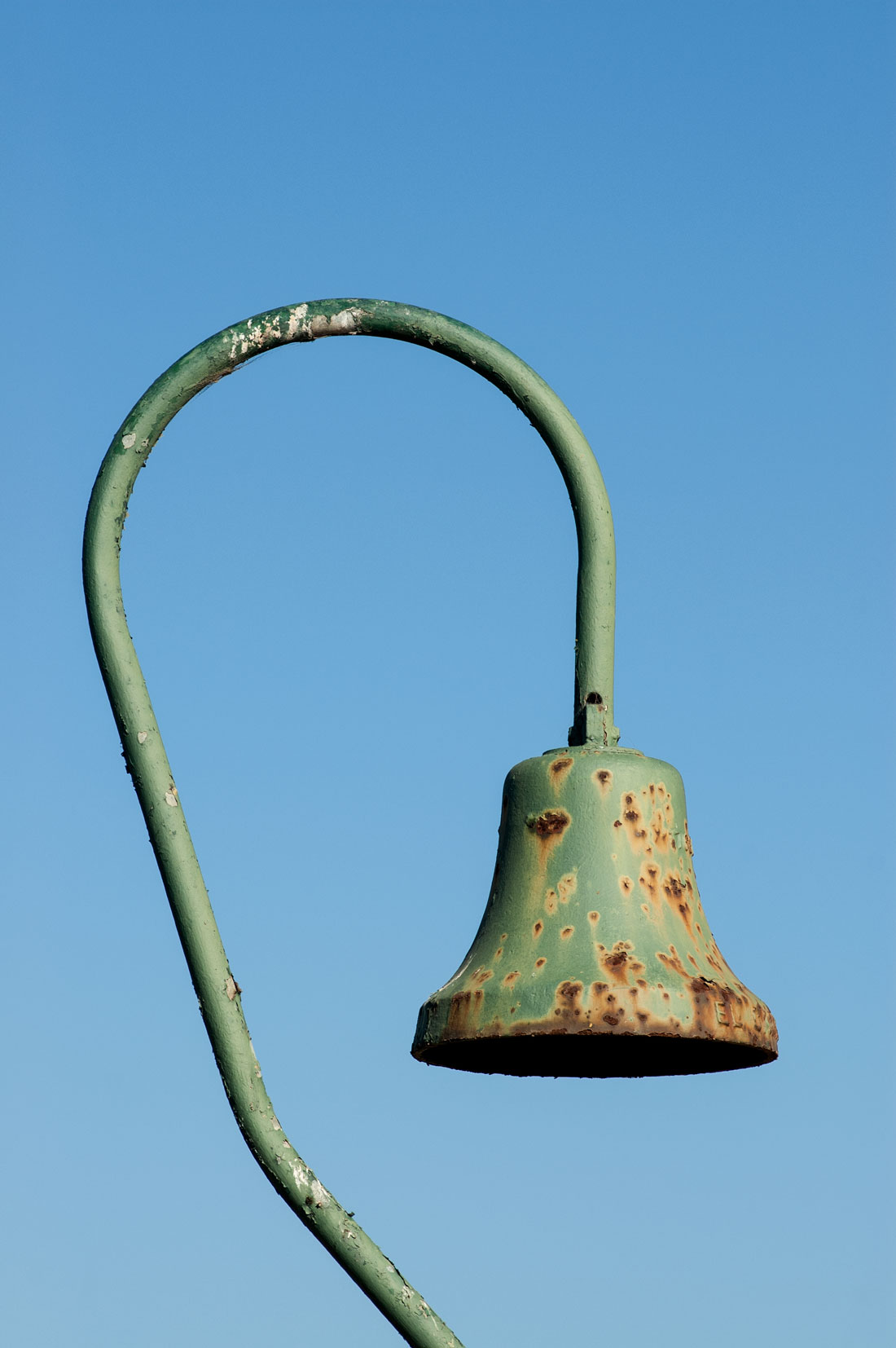
Marker for the Camino Real.
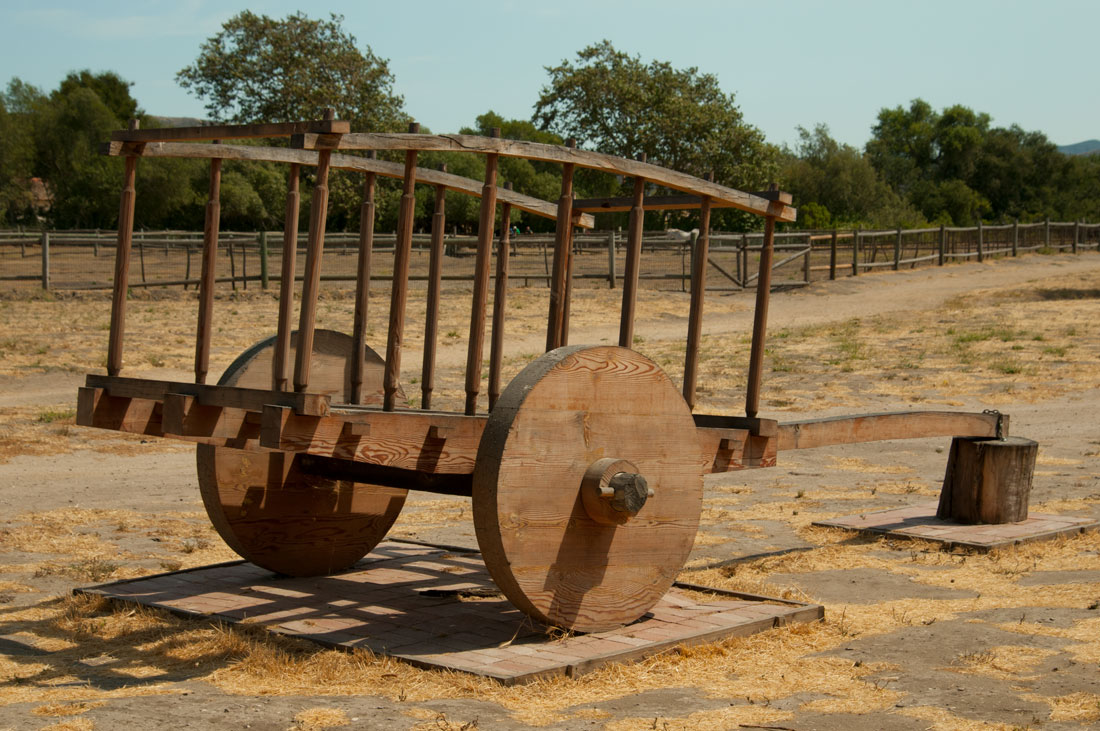
An ox cart of the kind that would have been used on the Camino Real and around the mission ranchos.
La Purisima was the only California mission not built as a large walled quadrangle. The mission’s leaders chose a linear design to avoid flooding and because they felt that the Chumash did not need to be contained within the typical fortress-like mission. The mission built a water system with aqueducts, pipes, reservoirs and filtration buildings. More than 100 adobe buildings were built.
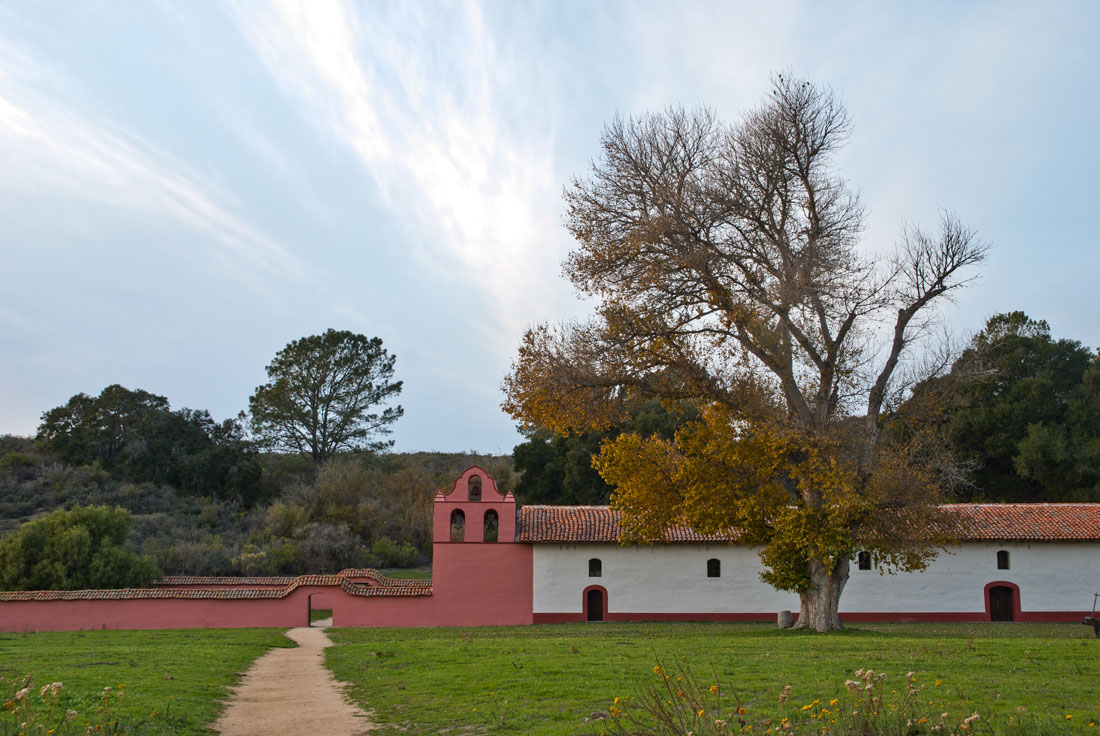
La Purisima was built in a long linear row rather than in the traditional mission quadrangle.
The mission was a series of working ranchos that had more than 4,000 horses, 12,000 sheep and 9,000 head of cattle in 1814. It had orchards and vineyards and produced wheat, corn, beans and barley as well as other vegetables. By 1818, the mission’s 11 ranchos extended 36 miles from north to south and 15 miles from east to west. La Purisima owned 300,000 acres, with ranchos varying from 4,500 acres to 50,000 acres.
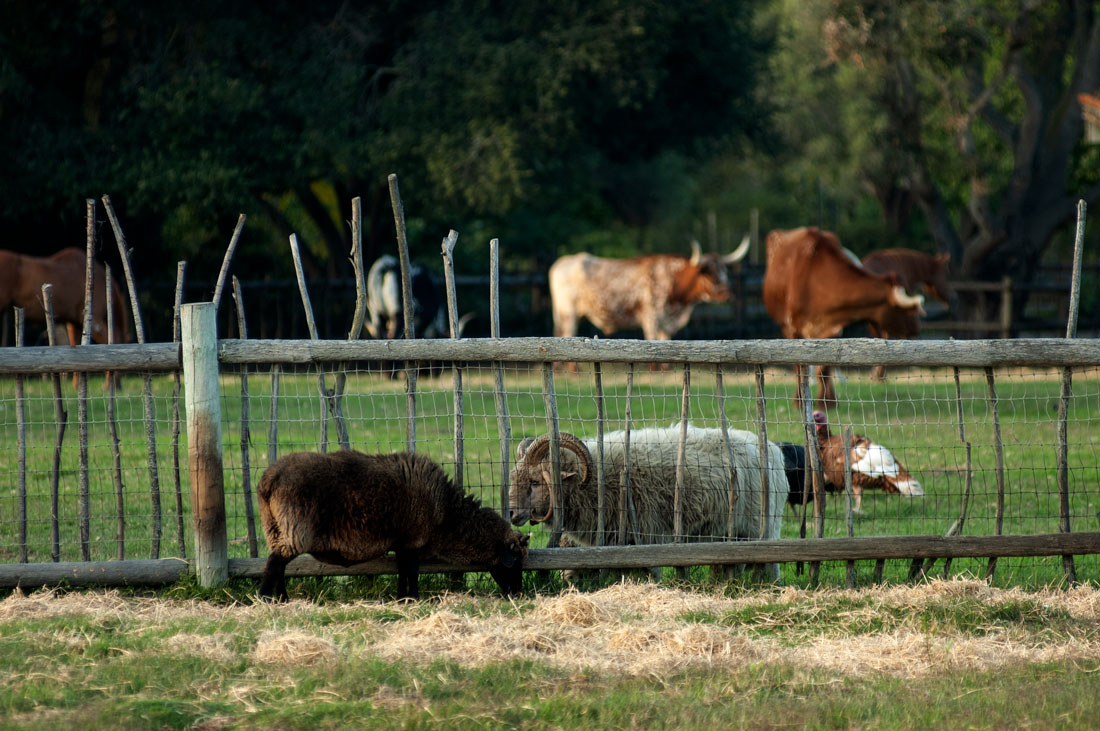
Thousands of head of livestock were raised at the mission. Today, animals are kept at the mission for historical demonstration purposes.
The Chumash people at the mission spoke a language that the Spanish called Purisimeño.
The comprehensive changes that the mission brought almost destroyed the Chumash tribe. The carefully preserved natural landscape where the Chumash had long hunted and gathered food was stripped bare by livestock grazing, forcing Chumash to join the mission or leave the area. The Chumash received little pay for their labor.
The mission had a squad of five soldiers called Soldado de Cuera, or leather-coated soldiers because they wore short protective leather coats. They protected the mission and maintained order.
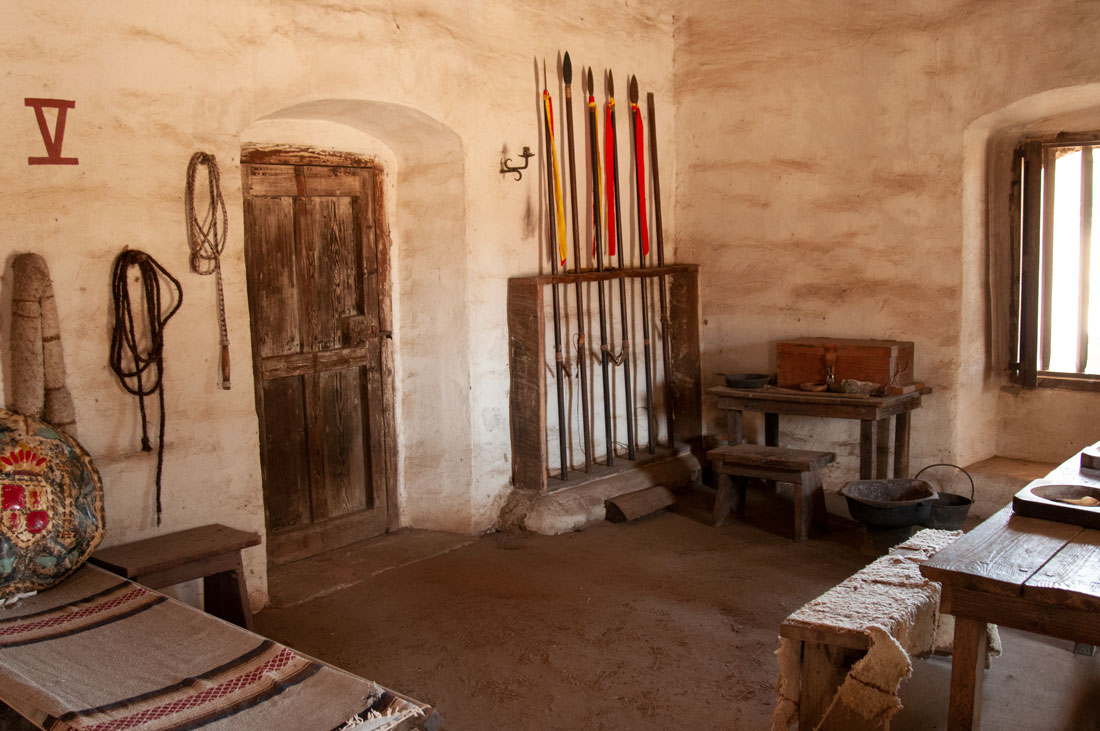
A small contingent of soldiers, with weapons such as the ones in the rack on this wall, protected the mission and maintained order at it.
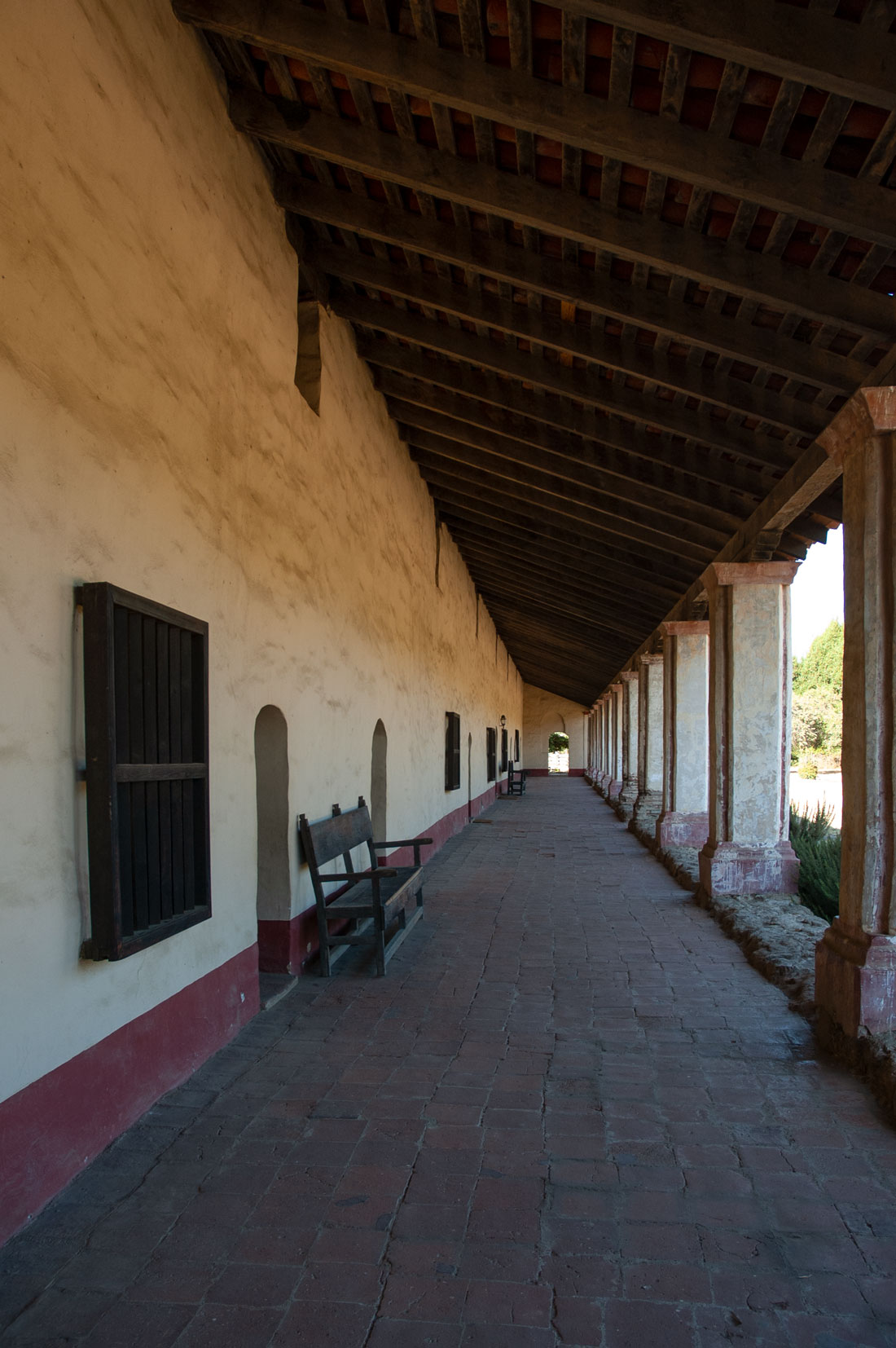
The workshops, residential areas and other rooms were off of a long veranda.
In 1810-14, the Spanish constitution established a precedent for equality of Native Americans with Europeans. It gave full citizenship to all persons in the Spanish colonies and outlawed forced labor and corporal punishment. Unfortunately, the law had little impact in California as Spanish rule in California collapsed and the missions and presidios lost government funding. As a result, Native Americans at the missions were under increased pressure to work longer hours without additional compensation to produce enough to support the presidios as well as the missions. The missions also exported produce.
Mexico gained its independence from Spain in 1821, but did not provide funding for the missions and presidios. The Mexican declaration of independence abolished all distinctions between Europeans, Africans and Indians. The Chumash at Santa Inés, Santa Barbara, and La Purisima missions heard about these promises of equal treatment, and were outraged when soldiers at the missions took out their frustrations over their vanished pay by mistreating Chumash people.
Some Chumash are thought to have wanted to create a new society independent of the missions with a mixture of Chumash and Christian religion, using European style farming and ranching as the economic basis. They began to plan a rebellion.
In 1824, a young Chumash boy from La Purisima was severely beaten by a Mexican soldier while the boy was visiting a relative imprisoned in the Mission Santa Inés guardhouse. Some 554 Chumash at the Santa Inés mission responded by attacking soldiers with arrows and set multiple buildings on fire. A number of people were wounded. The mission priest and soldiers barricaded themselves in a building, where they were rescued the next day by Mexican troops from the Santa Barbara Presidio.
The soldiers forced the rebelling Chumash into convert housing at the mission, and then burned it to flush the Chumash out. Fifteen Chumash woman and children and four men died and one soldier was killed.
Most of the Chumash fled to the Santa Barbara Mission or La Purisima to tell their fellow Chumash about the revolt. Some 722 Chumash at La Purisima joined the rebellion and took control of their mission while soldiers and their families, along with two Franciscans, took refuge in a storeroom. One Chumash man and four Mexican settlers who were passing by were killed. Some 1,270 Chumash fortified the mission, building wooden palisades and cutting gun loops in the mission walls as well as arming themselves with the mission’s muskets. After three days, the Chumash released the soldiers, their families and a friar.
At the same time, Chumash captured the Santa Barbara Mission, forcing the soldiers, clergy and civilians there to retreat to the Santa Barbara Presidio. Some Chumash men escorted Chumash women and children into the hills, taking the mission’s livestock, provisions and other goods with them. A small force of Mexican troops and priests arrived from the presidio to try to negotiate the surrender of the Chumash at the mission. The Chumash refused and a battle ensued in which two Chumash were killed and three wounded along with four soldiers. The soldiers retreated to the presidio, and the Chumash fighters vanished into the hills.
Some 109 infantry, cavalry and a canon left San Luis Obispo for La Purisima. Two Native Americans hastened ahead of them to warn the Chumash occupying the mission.
The Mexican soldiers attacked La Purisima on March 16, and the Chumash fought them off in a two-and-a-half hour battle using muskets, arrows and a cannon. The soldiers cut off routes of retreat from the mission. Sixteen Native Americans were killed and a number wounded while one Mexican was killed and two wounded. The Chumash asked Friar Antonio Rodriguez, who was in the mission, to negotiate a truce, and the soldiers accepted the Native Americans’ surrender.
The mission was retaken, but most of the Chumash from the mission were still in the hills, being supported by villages that gave them supplies and goods taken from the missions. The Mexicans punished some captured peoples in military tribunals and went to the missions in the area and threatened the native people at them with death unless the revolt ended.
Several military expeditions were sent out to the villages. In the first, four Native Americans were killed and three soldiers wounded before the expedition turned back in the face of a severe wind and dust storm.
With few Chumash to produce food at the missions, a shortage developed both at the missions and in the hills where villages were feeding those who had fled.
In May 1824, Frair Repol of the Santa Barbara Mission appealed to California’s governor to pardon the rebels, with the paternalistic argument that the Native Americans were children who needed to be taken care of. The governor issued a general pardon to all who had not been convicted by military tribunals.
The Chumash accepted the pardon and a celebratory mass was held, after which Chumash continued for weeks to return to the missions. By the next year, just four men and two-three women had not returned.
The rebellion was the largest organized resistance movement during the Spanish and Mexican periods in California. It involved 300 Mexican soldiers, six Franciscan missionaries and 2,000 Chumash and Yokut people.
By 1825, the use of uncompensated native labor at missions to finance the presidios became standard practice. In an 1826 proclamation of emancipation, the Mexican governor gave all Indians who were qualified freedom from missionary rule and eligibility to become Mexican citizens. Those who wished to remain under mission guardianship were exempted from severe forms of corporal punishment. By 1827, the Mexican government passed a law exiling Spanish-born people, including mission priests, from California. About 18,000 Native Americans were under mission control in California in 1831, but government in 1833 ended the mission system and sold off mission land.
The governor issued a regulation providing all mission people with seven-eight acres of land each, livestock, tools and seed. The missions were allowed to continue to hold title only to chapels, priests’ residences and a small piece of land surrounding churches for use as gardens. With the loss of livestock, orchards, barns, farmland and workshops, the Franciscans had no way to support themselves or the native residents. They abandoned most of the missions and local people plundered the buildings for construction materials. At La Purisima, the land and buildings were sold and the church collapsed into ruins over time.
The Spanish had encouraged Mexicans to settle in California by giving them large land grants called ranchos on which cattle and sheep were raised. After Mexican independence, former mission lands were sold as ranchos. They produced large quantities of cow hides and fat known as tallow used to make candles, California’s primary exports until the mid-19th century.
Those who worked on the ranchos were mainly Native Americans, many of them former mission residents who spoke Spanish and knew how to handle livestock or had other skills learned at the missions. Most were paid little.
A smallpox epidemic from 1837-1839 reduced the Chumash population by an estimated 75 percent.
In recent decades, the California missions have struggled to present a balanced account of the controversial Spanish settlement of the state.
In 1841, political leaders in the United States were declaring their doctrine of Manifest Destiny. American traders began entering California in search of beaver pelts, and the first pioneers made their way to California. After the United States won the Mexican-American War in 1847, the treaty between the two countries ceded California and other northern territories to the United States.
The native population by 1840 is unknown but has been variously estimated at about 30,000 to 150,000.
California’s hasty transition from Mexican possession to United States statehood by 1850 brought a large immigrant population from around the world. Without an established system of law and order, they dispensed justice quickly through whipping, banishment, or hanging, viciously mistreating Native Americans. Between 1849 and 1870, it is conservatively estimated that American colonists murdered some 9,500 California natives, and acts of enslavement, kidnapping, rape, child separation and displacement were widespread, carried out by and tolerated by state officials and militias. This has become known as the California Genocide.
The gold rush increased pressure on Native Americans because miners forced Native Americans off their gold-rich lands, pressed them into service in mines and raided their villages. Some fought back and many were killed.
Some of the mission lands and buildings were returned to the Catholic church under President Abraham Lincoln in 1874, but by 1934, only nine of the buildings remained.
The Catholic Church and Union Oil Company donated land to make the mission into a historical site. The Civilian Conservation Corps rebuilt ten of the buildings. The site was rededicated on Dec. 7, 1941, on the eve of the 154th anniversary of the mission’s founding and the day that Pearl Harbor was bombed by the Japanese.
La Purisima today is a state historical park and the most complete Spanish mission complex in California. It has been restored to its condition in the early 19th century after extensive historical and archaeological research. The mission includes the church, workshops, living quarters and a blacksmith shop as well as gardens and livestock corrals with animals that represent what the mission would have looked like in the 1820s. When there is no pandemic going on, living history events with demonstrations of crafts such as pottery, soap making, and weaving, and the making of food such as tortillas are held at various times during the year. Sheep are sheared along with wool demonstrations in the spring, and harvest demonstrations are held in the fall. Christmas events are held. There also is a visitor’s center.
La Purisima was one of the largest historical restoration projects in the United States. More than 140,000 adobe bricks, 54,000 roof tiles and 40,000 floor tiles were made by hand using local materials. Furnishings and hardware were made in the carpenter and blacksmith shops.
The mission is on 968 acres of land and is surrounded by 2,000 acres of parkland with 25 miles of hiking trails.
The mission is known for the peaceful but melancholy feeling that pervades it, and park rangers, tour guides, local people and tourists have described hearing strange whispers, seeing indistinct shapes and feeling cold drafts there. Some have claimed to have heard ghostly flutes – a sacred Chumash instrument.
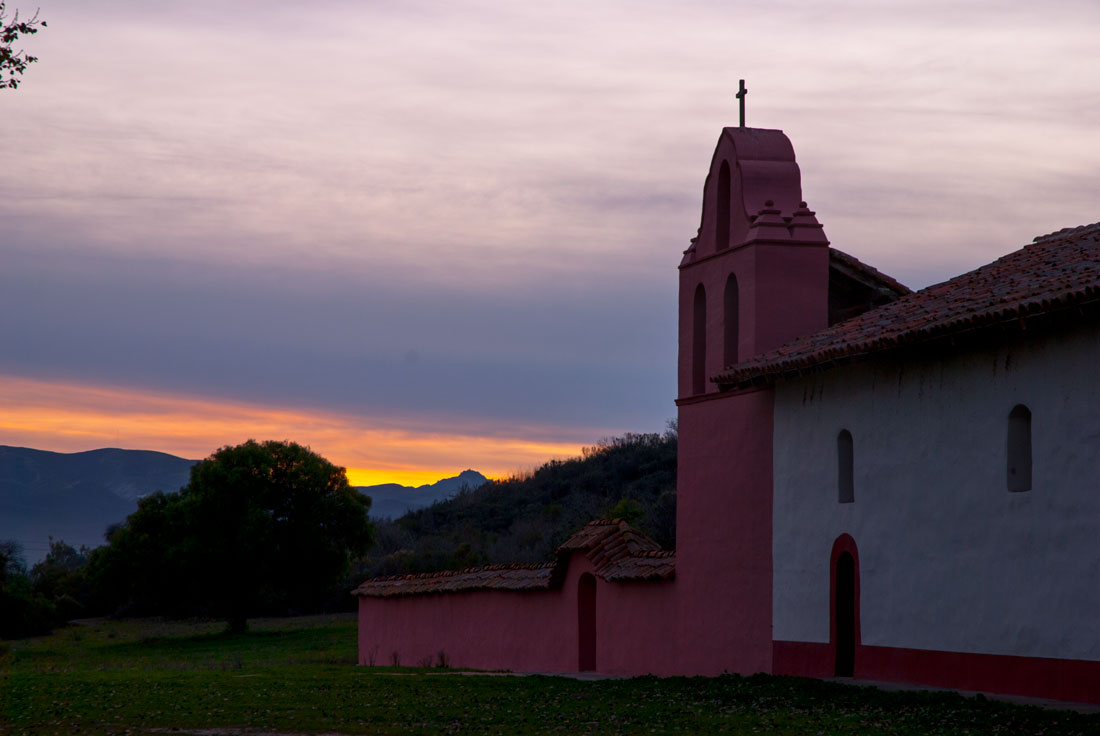
The visitor's center and buildings are currently closed for COVID-19 precautions but the grounds are open.
In 1855, 120 acres was set aside for just over 100 remaining Chumash Indians near Santa Ynez Mission. This land became the only Chumash reservation, although Chumash individuals and families continued to live throughout their former territory. Today, the Santa Ynez Band lives at and near Santa Ynez. Other Chumash bands also have sought federal recognition. The Chumash population was between roughly 10,000 and 18,000 in the late 18th century. Today, there are an estimated 5,000 Chumash people. The last speaker of their language has died, but publication of the first Chumash language dictionary took place in April 2008.
Check out these related items
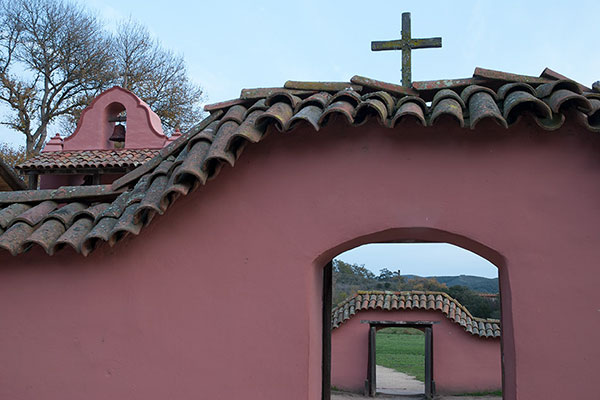
The Land of Junipero Serra
Junipero Serra's "sainthood" is controversial, but the extent of his cultural impact on California is indisputable.
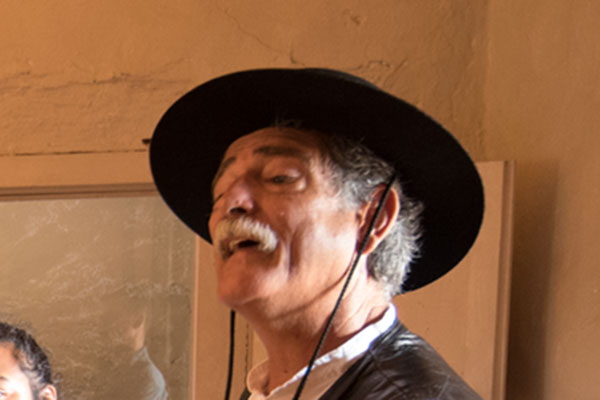
What does it mean to be Hispanic?
What does it mean to be Latino or Hispanic in the United States? This blog explores the ambiguous origins of these two terms.

California’s Danish Village
Solvang, California's Danish village, is the perfect place to take an afternoon stroll and enjoy pastries and art galleries.
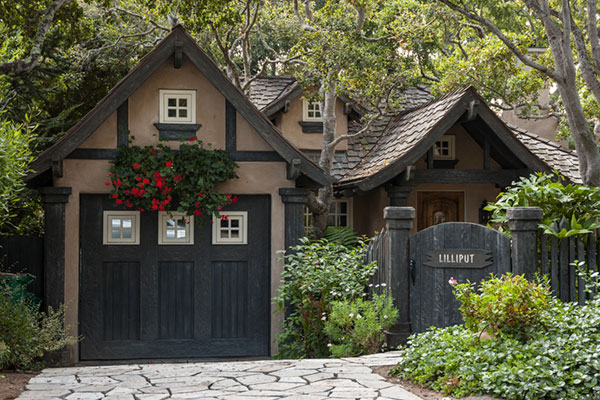
Why Isn’t Every Town Like Carmel?
Carmel, California, demonstrates how design, planning and environmentalism can enhance a small town.
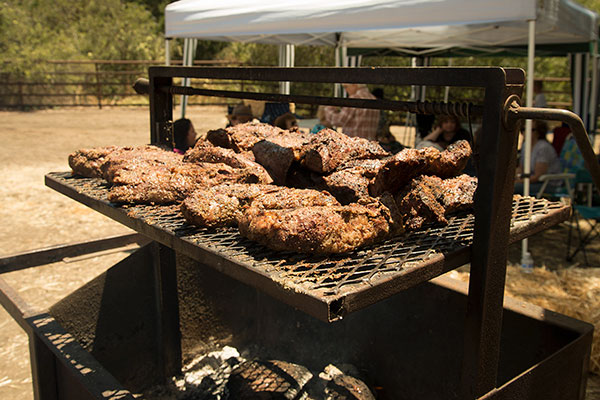
Barbecue Santa Maria Style
Santa Maria's scrumptious grilling is California's premier barbecue style.
